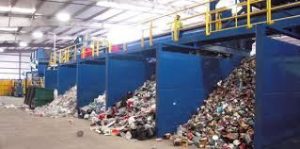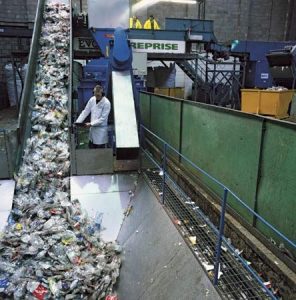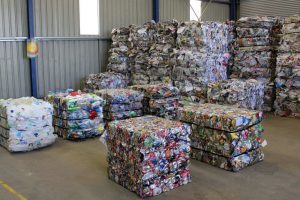 These three pictures show three steps of the recycling process of plastic containers. This process begins with many different containers being stored together because they are made out of plastic. Then the containers are loaded into a machine that compresses them together so that when they come out of the machine they hold a uniform shape. I would use this process to help students conceptualize functions. The storage of the many different containers represents a function’s
These three pictures show three steps of the recycling process of plastic containers. This process begins with many different containers being stored together because they are made out of plastic. Then the containers are loaded into a machine that compresses them together so that when they come out of the machine they hold a uniform shape. I would use this process to help students conceptualize functions. The storage of the many different containers represents a function’s
 domain, the compacting machine represents the function itself, and the compressed and uniform cubes of plastic containers represent the function’s range and the organization of the ordered pairs that are produced by the domain and range. By including this analogy in your lesson, students will all have at least one real world occurrence that they can use as they reason through the concept of a function.
domain, the compacting machine represents the function itself, and the compressed and uniform cubes of plastic containers represent the function’s range and the organization of the ordered pairs that are produced by the domain and range. By including this analogy in your lesson, students will all have at least one real world occurrence that they can use as they reason through the concept of a function.
One problem that I would give students to think about after introducing functions and talking about the recycling process would be:
If f(x) = 7x-10, what is f (5)?

If f(x) =, what is f (3)?
If f(x-1) = 3x +2, what is f (8)?
CCSS.MATH.CONTENT.HSF.IF.A.1
Understand that a function from one set (called the domain) to another set (called the range) assigns to each element of the domain exactly one element of the range. If f is a function and x is an element of its domain, then f(x) denotes the output of f corresponding to the input x. The graph of f is the graph of the equation y = f(x).
CCSS.MATH.CONTENT.HSF.IF.A.2
Use function notation, evaluate functions for inputs in their domains, and interpret statements that use function notation in terms of a context.